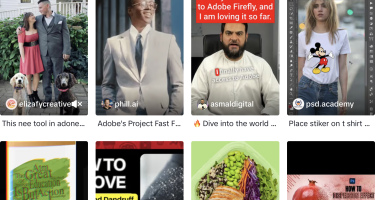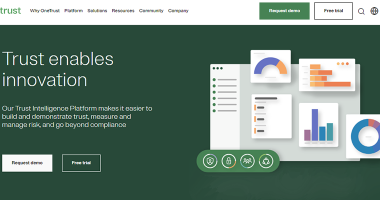
Opinions expressed by Entrepreneur contributors are their own.
Economists continue to be on the fence about whether we will see a recession in 2024. As we enter the last quarter of 2023, we are beginning to see a decrease in car and home sales spending as the interest rates increase. Bankrate reported a 0.7% decline in existing home sales in August, with some areas, like the northeast, experiencing a 22.6% decline.
Business owners who have their eye on the economic horizon are already wondering what they should do to prepare in the event of a downturn. In our experience, there is one main piece missing from most small businesses that, if fixed, can stabilize their incoming cash flows.
As the head of a marketing firm, I spend a lot of time helping small businesses get more leads. Most businesses are interested in capitalizing on the same popular lead sources: Facebook, LinkedIn, Google Ads, Google Business and the ever-present litany of cold outreach opportunities.
Their ideal customer? Someone willing to buy today.
Most small businesses operate like coupon sites. Their websites are like those ever-popular sites that you visit to get a discount right before checking out. Need a plumber? Click my site and call my number. They position their marketing dollars at the bottom of the funnel, ensuring they can capture their share of the last-mile customer.
What businesses owners don’t know, is that 92% of site visitors will never make a purchase, according to a study by Episerver. This lost revenue can provide a huge opportunity for business growth.
The best marketing tool to capture this untapped 92% is customer relationships.
Related: They Visited Your Site. Here’s Why Didn’t They Buy.
Building customer relationships
Before the internet, all business was relationship-driven. You didn’t just go to the cheapest feed mill; you went to the one your friend owned. Your patronage was likely rewarded with preferred pricing or payment terms.
Today’s business transactions have become commoditized. End users choose among faceless websites and often choose the first company that picks up their phone (a surprising number of small businesses will screen callers through voicemail.).
Once the transaction is complete, there is little to no follow-up. No relationship is created.
Relationships are demonstrated as a deep trust from the customer towards the business (often measured with a net promoter score). Building relationships requires an intentional plan that leverages technology to enhance customer service. Here is a simple plan any small business can implement to enhance their relationship building.
Lead capture
It starts with the lead capture. Make it easy for the customer. Sure, you might like email form fills, but your customer must have every option available: contact forms, email addresses, phone numbers and even an AI-powered chatbox.
Basic customer service skills tend to be lacking in America. Training your staff on warm responses can go a long way toward closing the sale in the first five seconds.
Whatever occurs during that first interaction, you want to capture their email address (and permission to use it for marketing). Email is the key to staying in touch with your customer in a low-key, non-offensive way. If you can get it, obtain their phone number as well (sometimes we do this as a second step in the relationship).
To capture even more leads, have a lead magnet for them to download. We often receive resistance from small business owners on this point. A plumber, for example, might not feel that they can offer an enticing lead magnet.
Developing a good lead magnet can require creativity. In our plumber example, they may create a piece on the “#1 Leak That Destroys Home Value (And How To Catch It Early).” This could then be displayed as a popup with a simple email capture.
Keep it simple. Even 1-page PDFs or training videos can serve as effective lead magnets. Be creative and capture emails to start conversations with as many people as possible.
Related: Lead Generation Best Practices That Help You Find New Customers
Lead follow-up
Sometimes, leads don’t convert into customers right away. This is why you must follow up on each lead — customers are busy. They will continue to push things off for as long as they can. The business willing to follow with these people will eventually garner their business.
The challenge for most small businesses is hiring the right person to make these follow-up calls. Generally, a basic CRM, a phone line and someone to make calls for two hours on Friday will get the job done.
There are many arguments about how aggressively you should follow up with potential clients. In most of our industries, we find that three touches are the right amount for closing clients. If they don’t close, move them into the lead nurturing sequence.
In the business of life, most business owners don’t think about lead follow-up. However, incorporating this step now will help protect your business against potential slowdowns.
Lead nurturing
What if a lead does not become a customer? Every lead who doesn’t become a customer today might be a customer tomorrow. Sometimes it takes a year to close a customer.
In the meantime, this is when you should be building goodwill with them. We build goodwill by providing value. What industry information can you provide them on a monthly basis that will help them in their life and business? A monthly email is more than most companies offer. A good first step is to provide a weekly automated email sequence to stay top-of-mind with your leads. After the first six weeks, switch to a monthly cadence.
In some industries, we have seen a 10x improvement in their deal closure after implementing a monthly email sequence. It seems that many people will need more proof before doing business with your company.
These emails can provide exactly the proof through expertise, helpfulness and longevity (doing it for several months). Customers often need This added proof to move over the activation threshold and begin transacting with your business. There is power in frequency. A monthly email is an easy way for past customers to stay top-of-mind for their future referral business.
Related: What Makes the Sales Follow-Up Email Special?
Customer satisfaction
From the moment a customer agrees to work with you, aggressive customer satisfaction must be at the forefront of every employee’s mind. Overcommunicate with the customers, from scheduling changes to little updates on their projects. Be proactive in keeping them informed.
After that, make sure to send every customer an exit survey. This is vital feedback that you could pay thousands of dollars to hire a secret shopper to uncover — or you could have an automated text or email that goes to your customers. This customer satisfaction piece is an important part of creating both recurring and word-of-mouth business.
Extremely satisfied customers who view you as someone they trust are the end goals of a customer relationship strategy. Thanks to technology, it is easier to stay in contact with your customers. Since few business owners are taking the initiative to do so, the advantage goes to the entrepreneur who is the first to implement a lead nurturing and customer satisfaction sequence into their daily operations.
This article is from Entrepreneur.com









